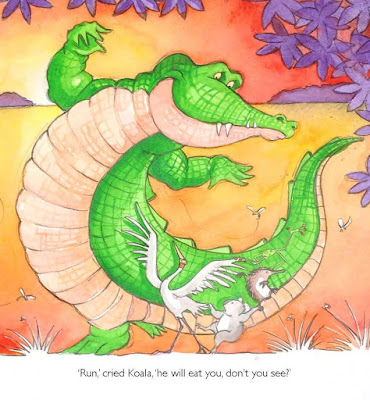In this series of
posts on writing for children I hope to help you develop your own picture book
story in a way that will give it the best possible chance of acceptance by a traditional publisher.
Do you have some ideas
for a story? What will your story be about—no, not …about a mouse that… or …a
boy who… What will it REALLY be about?
Picture books
normally have a theme that helps the child reader to make sense of their world
and discover how it works, how to fit in and how to get the most out of life.
Examples of universal
themes include:
- You will always be loved by your parents
- The value of friendship
- How to love
- How to compromise
- Happiness through sharing
- When fed lemons, make lemonade
- The value of honesty
...And I'm sure you can think of many more.
The theme of your
story will be its foundation, its soul and life-force. And the story will be an
outer layer wrapped around the theme, explaining the world emotionally. The
theme could be described as the moral or meaning of the story, or what will be
learned.
A story can have more
than one theme.
You may choose a theme
or themes as a starting point for your story, or the theme(s) only become clear
during the planning and plotting …or even after a few drafts have been
completed and you’re into editing.
At whatever time you
decide on or discover the theme or themes, your story will be the showcase, and
so the theme(s) tell you what belongs to your story and what doesn’t ...therefore,
as you plot and edit, most scenes, characters, dialogue and images in your
story should reflect one of your themes.
You can write an entertaining
story without a universal theme …but it’ll never be considered a ‘great’ or
‘significant’ story because the reader won’t gain inspiration or learn
anything about the world.
Theme is what people will talk about when they describe or
discuss your story—it’s what makes people buy copies. It’s what sales people
look for, and they have a voice in the acquisition process.
The theme is why the
story exists and should be read (though you need to entertain as well)…
BUT…
…you must never tell
the reader what this theme or meaning is. NEVER write: ‘…and so always remember
what Barry Bunny learnt: you must always tell the truth!’ This is a sermon. It’s
didactic. It’s preaching, frowned upon—the current belief in publishing being
that people don’t want to be preached to, told the moral or how to behave.
Theme needs to be like
sugar dissolving in and becoming invisible among the other ingredients of a
baked story cake.
Children are smart. If
your story is well written and illustrated, the theme will be obvious from the
characters' actions, reactions and dialogue - just make sure that it comes across is
a worthy theme. You don’t want children to take from your story that ‘the
winner is the person who makes the biggest threats’.
In the next post we will look at plotting and story structure.
In the meantime, I hope you keep noting ideas and possibilities and remain open-minded as to what you may add or discard later.
Peter Taylor

